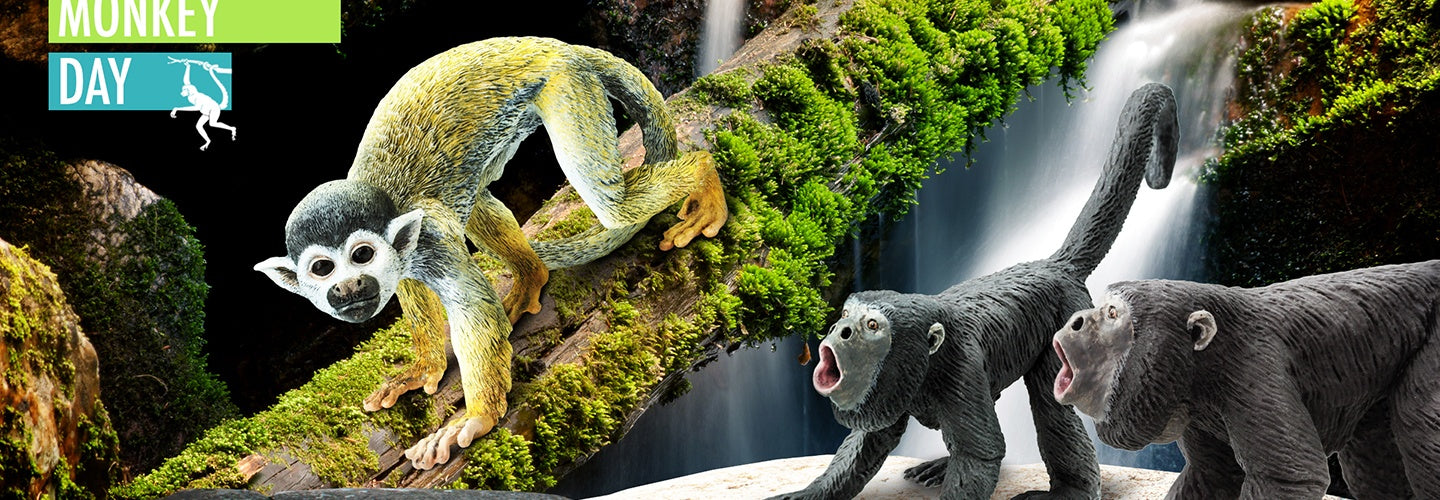
It's Monkey Day! Go Bananas!
It’s MONKEY DAY! The day to celebrate not just monkeys, but all things simian, including apes and other primates. Monkey Day is your day to really just let loose and go bananas, but first let’s learn a little bit about this day and the animals it honors.
Monkey Day, also called “Day of the Monkey”, was developed by two artists, Casey Sorrow and Eric Millikin, as something of an inside joke, until it began to take on a life of its own. It’s currently recognized by National Geographic, Greenpeace, and primate expert Jane Goodall.
Just what is a monkey? “Monkey” is a fairly non-scientific term referring to a mammal in the infraorder Simiiformes (advanced simian primates) that is not an ape. The easiest way to tell an ape from a monkey is to determine whether or not it has a tail. Monkeys have tails, while apes do not. Other primates such as lemurs, while they have tails, are not considered monkeys. But that doesn’t mean you need to leave them out of your Monkey Day celebrations.
There are two main types of monkeys: The “Old World” monkeys of Asia and Africa, and the “New World” monkeys of the Americas. New World monkeys have flatter noses with more side-facing nostrils than Old World monkeys, which usually have longer, more narrow noses. However, the most obvious difference is the tail: monkeys of the Americas have longer, prehensile tails built for grasping, while those of the Old World have shorter tails, and are more closely related to the apes which have lost their tails entirely.Monkeys come in a wide range of sizes. The smallest is the pygmy marmoset which measures under 5 inches when fully grown, while the largest, the mandrill, can reach over three feet and weigh nearly 80 lbs. Monkeys often live in trees, especially the New World variety which use their long tails to help them navigate among the tree branches. However, some larger species prefer to live on the ground. They mostly eat fruits, seeds, nuts, and other plant-based food items, though they do occasionally eat eggs and insects.
There! Now you know enough about monkeys to get out there and show your stuff for Monkey Day! Share your knowledge of these majestic mammals with your friends, and while you’re at it, why not get into some monkey business?
Bernie’s Bonus Fun Fact: Miss Baker was a squirrel monkey who was launched into space on a rocket in 1959. She was successfully recovered and lived until 1984, when she passed away at age 27. She was the oldest living squirrel monkey ever recorded.





 Facebook
Facebook
 Twitter
Twitter
 Instagram
Instagram
